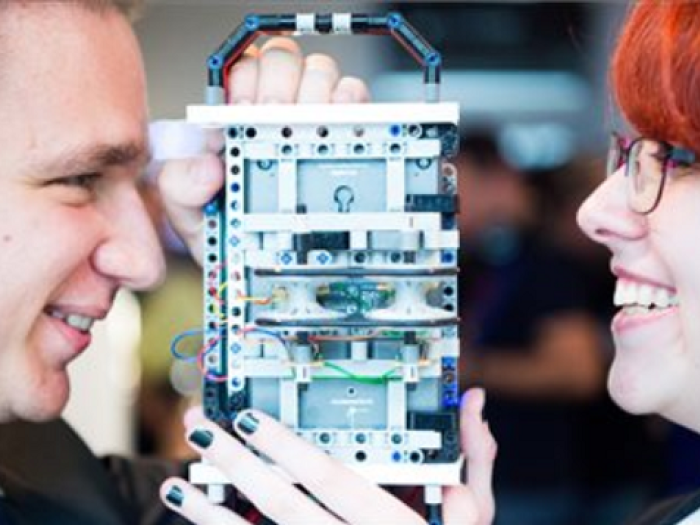NEWS
Results of the 26th National Youth Science and Innovation Talent Competition were announced at the end of May. Congratulations to all the participants and prize winners, and I appreciate that instead of playing on consoles or being engrossed in Internet entertainment, they are using their free time to make their own ideas a reality. The detailed results were reported by numerous media sources, so instead here I would like to draw attention to some of the more interesting things I have seen as a member of the jury.
As the title of the competition states, it’s a science and innovation challenge. One-third of the entries have been about carrying out some scientific research, two-thirds set a goal for a new device, prototype or procedure. The evaluation of the competition happens in sections (medical sciences, mechanics / electronics, physics / math, chemistry, informatics) but oftentimes it’s difficult to classify the entries into their correct section based on the submitted materials. It appears that the really interesting things today are born in border areas where two (or more) sciences interact or overlap. When finding research themes, references to summer camps of academic research institutes and universities have been repeatedly highlighted, where interest in a particular problem can be raised. But it can be said in general that the preparatory teachers play a great role in steering, assisting and helping students, even though in this competition they tend to remain in the background. There are several secondary schools both in Hungary and from across the border whose students enter the competition with outstanding entries year after year. This cannot be a coincidence.
A few years ago I read a book by Chris Anderson titled “Makers: The New Industrial Revolution”. The author predicted that with 3D printing, open source hardware and software anybody can become a “maker” and realize his idea, and this will launch a new industrial revolution. What I didn’t count on – although looking back it seems logical – that this revolution will be accelerated mostly by the teenagers of today. Because a large portion of the entries showcasing new devices can be traced back to this idea. It’s incredible to hear from 15-17 year olds that they designed the 3D model of the device in a CAD system, printed it out with a 3D printer, then assembled the related control from Arduino cards, and even programmed a small display system for it on their laptop. Naturally, they want to share their results with other like-minded “makers”, so they publish them on websites and social media channels, trying to find followers for their ideas.
Most software development is done on smartphones, primarily for the Android platform. These devices are the most affordable for the youngsters, and it doesn’t restrict developers as much as other platforms, either. However, those who go in this direction are quickly faced with the fact that starting is easy, but it’s very difficult to rise above the sea of existing applications. Although the idea might be very good, it takes a lot of time and money to gain visibility. In the meantime, some else may appear with the same idea who can mobilize users better. This brings up another thought. Very few of the applicants took the initiative to explore competitors with similar ideas. Did someone else patent this idea already? You might say, “Come on! Here the main goal is get to an international tournament. Who would object?” The situation is not that simple. Many applicants are already preparing crowdfunding campaigns to create the financial resources to produce a prototype. This is not just about coming up with an idea any more: this is the launch of a business that many people may get into with smaller amounts, but there are obligations to them, too. It is said that an entrepreneur gets only one chance at crowdfunding. If it goes wrong, the community will lose faith both in the idea and in the person. In such a fierce situation failing to thoroughly investigate intellectual property carries a huge risk.
Participating in international competitions requires a confident knowledge of the English language. I am pleased to say that most of the applicants are well off in this regard. It may also be positive – but to me it’s more thought-provoking – that many high school seniors are preparing to attend universities abroad. I am certain that all the applicants are talented young people who will become excellent researchers, engineers and “makers” in the future. If they join a professional interest group abroad, there will be one less reason for them to come home. We would lose a lot with their departure.
Balázs Bodnár, Managing Director of evopro systems engineering Ltd.

